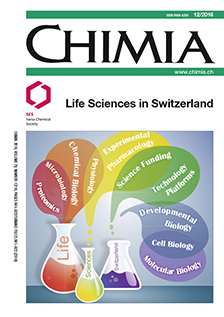On-line Monitoring and Control of Fed-batch Fermentations in Winemaking
FH-HES Universities of Applied Sciences
DOI:
https://doi.org/10.2533/chimia.2016.900Keywords:
Adaptive control, Fed-batch fermentation, WinemakingAbstract
The fermentation of yeast in fed-batch mode shows great potential in winemaking because it allows the concentration of sugars to be kept low and constant throughout the process which, in turn, reduces cell stress and leads to a significant decrease in the production of unwanted secondary metabolites. The implementation of this technique requires reliable on-line analysis of sugar and a robust control strategy to maintain sugar concentrations at defined levels over the course of the fermentation. In this study, a laboratory-scale setup was used to implement and assess a fully automated fed-batch fermentation of Saccharomyces cerevisiae in grape must. Total sugar levels were monitored in-line by FT-MIR ATR spectroscopy and kept constant at 50 g/kg by a modified PI controller regulating the must feed flow rate. Good setpoint tracking and disturbance rejection were achieved in fermentations of up to four days despite occasional yeast sedimentation on the ATR crystal. The controller parameter adaptation strategy needs to be optimized for longer fermentations.Downloads
Published
2016-12-21
Issue
Section
Columns, Conference Reports
Categories
License
Copyright (c) 2016 Swiss Chemical Society

This work is licensed under a Creative Commons Attribution-NonCommercial 4.0 International License.
How to Cite
[1]
M. Dabros, G. Genasci, L. Blanchard, S. Unterhofer, O. Vorlet, R. M. de O. Heidinger, J.-P. Bourgeois, Chimia 2016, 70, 900, DOI: 10.2533/chimia.2016.900.







